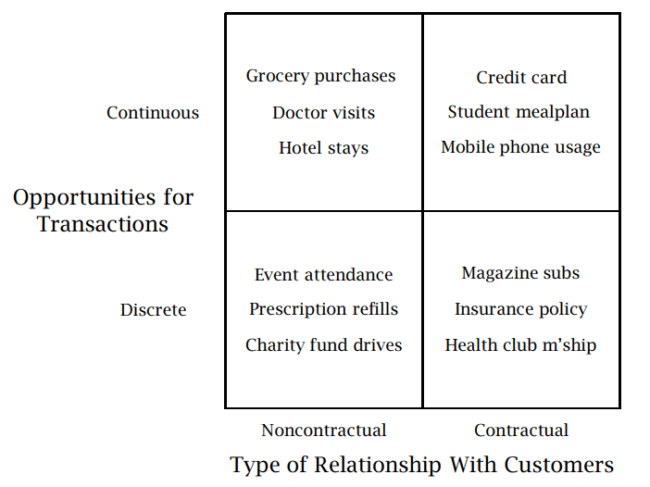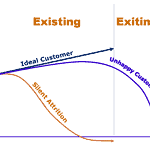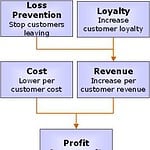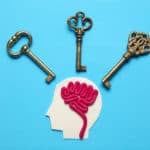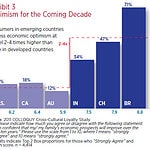Customer churn prediction has become increasingly critical as subscription business models dominate the market. What was once a simple calculation now requires sophisticated analysis of multiple data streams to accurately predict when customers might leave.
In this guide, we’ll examine the key approaches to building effective churn prediction systems for both B2B and B2C environments.
Key Takeaways for C-Suite Leaders
Business Impact & Digital Transformation
- Churn prediction is a critical element of your transformation strategy, helping protect revenue during system and process changes
- Advanced prediction models can integrate with your new digital infrastructure, supporting your transformation initiatives
Risk Management
- Protect revenue streams by identifying at-risk customers 3-6 months before they leave
Operational Excellence
- Combine automated prediction models with human intelligence for better outcomes
- Focus resources on high-value customer retention during transformation periods
Implementation Strategy
- Start with basic predictive indicators that don’t require heavy technical investment
- Scale sophistication as your digital transformation progresses
- Align churn prediction with your customer experience transformation initiatives
What is Customer Churn
There are three main types of churn:
Customer Churn
Customer churn is when a customer stops buying all products and services and becomes an ex-customer. Typically this is a negative event for the company as it reduces the businesses revenue.
Importantly this is done on a cohort basis, i.e. new customers added in the period are ignored in the calculation.
Product churn
Product churn is the number of products or services lost in the period. The number of customers may stay the same, go up or down.
This is relevant in organisations where a single customer purchases multiple services, e.g. banks where a customer might buy a credit card, have a loan and savings account. Product churn is when that customer closes out their credit card.
Revenue Churn
Revenue churn is the revenue lost in the period.
Again the number of customers and products might go up or down but revenue churn is how much revenue has been lost in the period.
If you lose 10 small customers one month but one really big customer the next, your Customer Churn might go down but your Revenue Churn has gone up.
Reporting Customer Churn
Customer churn is typically reported in percent terms over a period of time, e.g. 5% per month or 24% per year.
The percentage indicates the total number of customers lost in the period as a proportion of the starting amount and ignores new customers added during the period.
Why Customer Churn Prediction Is Important
Customer churn prediction allows organisations to proactively approach at-risk clients and try to repair the relationship before the customer actually leaves. It is a pre-warning that lets you act.
It is generally accepted that retaining a customer costs a lot less than acquiring a new one. So being able to predict a customer is going to churn and preventing it, is better than losing them and finding another to replace them.
Find out exactly how profitable retention is by downloading our free Return on Customer Retention Estimator.
Customer Churn Prediction Approaches
Here are the three main approaches to churn prediction:
Statistical & Machine Learning Models
Very often customer activity changes in subtle ways before they churn.
Statistical and machine learning models use the data that companies routinely collect on their customer’s activity as a basis, along with some advanced statistics, to predict what customers are likely to do.
Common Churn Prediction Model Approaches
Median absolute deviation or MAD
A relatively simple statistical technique, akin to standard deviation, can be used to create a predictive test that can be applied to a large variety of SaaS customer attrition prediction tasks.
See this post for an example: Crazy Simple Anomaly Detection for Customer Success
Try to guess the probability of a customer belonging to one group or another, in this case likely to churn, not likely to churn.
Neural network churn predictors
Systems where software “learns” to perform some task, predicting if a customer will defect, by analysing training examples, in this case, information about customers that left, and did not leave.
Churn Prediction Model Problems
While these models can be very useful and accurate, there several practical issues with their use:
Black-box
It is difficult for staff to trust them as they are typically “black box” in nature – there is often no way to explain how a particular churn likelihood score has been calculated.
Skill requirements
Churn prediction models require highly specialised and skilled people to build and maintain the model
Converting to action
It can be difficult to convert the prediction that someone will leave to an action the company can take to prevent their leaving. You can’t just call a customer and tell them “our software says you’re going to cancel your agreement soon, what can we do to make you want to stay”?
Difficult for low transaction businesses
It is difficult for low/no transaction volume businesses to implement, e.g. retail gas, retail electricity, because there are very few items of data on which to make a prediction.
It not always clear the customer has churned
It may sound strange but it’s not always obvious when a customer has churned. Depending on how the customer buys, continuous/discrete purchases, and the relationship, contractual/non-contractual, you need to approach it in different ways.
For contractual/continuous relationships, the exact point when a customer churns is pretty easy to identify.
For instance with telecoms, SaaS, utility companies, a customer must actively inform the company they are no longer going to purchase their services. When they cancel their agreement they have churned.
On the other hand for non-contractual relationships, e.g. retail, printing, consulting and graphic design industries, there is often no agreement to reference.
Customers also make purchases on an irregular basis so it’s very difficult to distinguish between a customer just not having made a purchase in a while and a customer having churned and now using another supplier.
Things get even more complex when customers can only purchase at specific intervals, e.g. annual conference suppliers.
Solving Churn Model Problems
Improving interpretability is an important way to build trust in the model’s predictions and enable businesses to take appropriate actions to prevent churn.
Interpretability in this case just means the ability for people in the business to understand why the model gave an answer and what do do about it.
Some churn prediction approaches, such as logistic regression, are inherently interpretable, others, such as neural networks, can be more difficult to understand.
Fortunately, there are several techniques that can be used to improve the interpretability of these models:
Feature Importance Analysis
This technique involves analysing the contribution of individual features to the model’s prediction. By ranking the features by their importance, businesses can understand which factors are driving customer churn and take appropriate actions to address them.
Partial Dependence Plots
Partial dependence plots show the relationship between a feature and the model’s prediction while holding other features constant. By analysing these plots, businesses can understand how changes in individual features affect the model’s prediction.
LIME (Local Interpretable Model-Agnostic Explanations)
LIME is a technique for generating locally interpretable explanations for individual predictions. By identifying the features that are most important for a particular prediction, LIME enables businesses to understand why the model made a specific prediction and take appropriate actions.
Deduced Customer Churn Predictors
Often, businesses are able to identify customer pre-churn indicators from business experience and a good understanding of the customer journey map.
Here are some examples of indicators that the customer is at least considering churning:
- Mortgage lending – Mortgage lending – customers calling and asking for the “payout figure” on their mortgage loan
- B2B SaaS vendors – customers asking for a copy of the agreement and/or when they need to renew
- On-line subscription services of all types – clients who have not logged in for some time or whose use has decreased suddenly
These approaches are relatively “low-tech” and can be implemented by businesses of all sizes and complexities.
Customer Feedback Based Prediction
For B2B companies, surveying your customers on a regular basis, relationship surveys, has been shown to be an effective way to predict customer churn.
In a recent study it was shown that using “would recommend” style survey questions such as Net Promoter Score, is a very effective way of predicting B2B customer churn 3-6 months before the churn event occurs

By asking customers the NPS question on a regular basis, typically 3 monthly, and looking for declining scores it is possible to identify at risk customers.
The 3-6 month lead time is particularly important in B2B organisations because trying to save a customer at the last minute is almost impossible. Consistency of supply is key in a B2B context and before cancelling with one supplier, most B2B organisations will already have selected and onboarded a new supplier.
Customer Churn Prediction FAQ
Nothing – these are synonyms and both refer to the same outcome: a customer ceasing to do business with the company.
What constitutes a good customer churn rate depends heavily on the industry. For example, bank churn rates are generally very low. In 2018 only 4% of US banking customers changed banks. On the other hand streaming video on demand annual churn rates are of the order of 70%.
To benchmark your company’s performance you will need to collect data specific to your industry.
Churn drivers depend heavily on the industry and business but recent research shows that 51% of B2B service clients will churn for a better price and 12% for a better relationship with the organisation.
Churn rate is important because it helps businesses understand how many customers they are losing over a period of time. By identifying which customers are leaving, businesses can take proactive steps to retain them before they actually leave. Retaining existing customers is usually less costly than acquiring new ones, so keeping your churn rate low is essential for business success.

